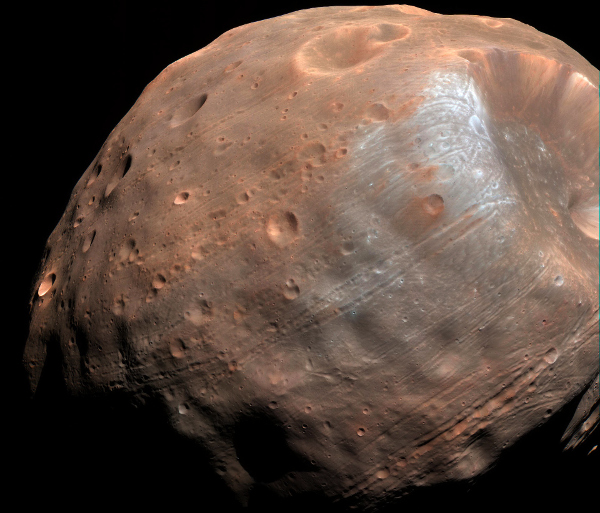Hayabusa-2 has completed its work at Ryugu, a small asteroid in the asteroid belt between Mars and Jupiter, and will come back to Earth by the end of 2020. This is the second sample-return mission to collect material to see if how planets are made and if there is any sign that life comes from an asteroid. Ryugu is a C Type asteroid that is rich with carbon, so there is an expectation that the sample may contain some sort of organic matter.
The sample-return mission on an asteroid has a lot of difficulties to be successful. First, it is hard to know the detail of the asteroid beforehand. The only way of knowing the target asteroid is to see through the telescope and to guess the texture of the surface, the gravity and so many other things that need to be known to design spacecraft. In other words, the probe design has to be flexible and able to adjust to different landing scenario. Second, because of the distance, it would be difficult to communicate with the spacecraft. For Ryugu, it will take about 40 minutes to send the command and receive the radio. Thus, it would be difficult to remote control of the spacecraft. Everything has to be pre-programmed and automated with a simple command.
It is also difficult to know what is going on around the spacecraft due to the limited bandwidth and delay of transmission. Third, even though the spacecraft requires a lot of fuel to travel a long distance, but it has to be small in order to gain speed to leave the Earth’s gravity. Hayabusa found the solution to use the ion engine to carry a limited amount of fuel. The ion engine is to use an electronic propulsion system that requires a small amount of chemical propellant.
Hayabusa-2 was not possible without the first one. The first Hayabusa was quite a drama. Not only it was the first attempt to return from an asteroid with robotic sample collection, but it also faced a lot of difficulties to manoeuvre. Because of the miscalculation of the landing point, the probe bounced on the surface of the asteroid, which caused the failure of some engines. The mission was rescued by some improvisation of engineers by using the engines in a not designed way. It was like Apollo 13 mission which returned with full creation after an unexpected accident happened. The first Hayabusa attracted a lot of attention of Japanese as well as the world if it can bring back the samples from Itokawa, the asteroid.
Some Japanese cheered the probe by drawing personified spacecraft as a fragile little girl with full of wounds. The efforts of the team of engineers, headed by Prof. Kawaguchi, became three different movies. When the returning capsule reenters the Earth’s atmosphere, it sent a picture of the Earth that seemed to be a dying message as well as strong evidence that the Hayabusa mission overcame the hardship.
Such a dramatic ending of Hayabusa, despite the limited scientific achievement, became a national sensation. Also, robotic sampling from asteroid was the first time that Japanese space activity earned the prize of “first in human history”. The first Hayabusa, therefore, quickly became the symbol of Japanese technological success and achievement. Thus, politicians put higher priority for a follow-on program, Hayabusa-2, to secure Japan’s position as the champion of sample return missions.
Lessons from the first Hayabusa, together with political prestige and popular support, were fully reflected the design and development of Hayabusa-2, which leads to the success of Hayabusa-2 so far. It completed to collect rocks and sands with two touchdowns, and also successfully shoot a bullet to create a crater for investigating the inside of the asteroid. It scored near-perfect success on each event, which created less dramatic scenes to attract attention from politicians and people, but this is what scientific mission supposed to be.
JAXA is now preparing for the follow-on program for sample return. However, the next mission is not going to be on an asteroid but on a satellite of Mars which is called MMX (Martian Moon eXploration). Such a new project will create a golden opportunity for Japan and India to work together. India is the first country in Asia and the third in the world to successfully send a probe in Mars orbit. Japan had tried to launch Nozomi (PLANET-B) to Mars but was not able to reach. The experience and technology of India to send spacecraft to Mars would increase the reliability of the project, and Japanese experience on sample return will contribute to collect samples from Martian Moon. This project will provide a lot of data on the formation of the planet in the solar system.
The MMX is planned to be launched in 2024 and will return to Earth in 2029. There is a lot of time for both Japan and India to work together to design and plan for this mission. The experience and knowledge of both countries will supplement each other and will provide a strong base for further space cooperation.
(The author Kazuto Suzuki is Professor of International Political Economy, Graduate School of Public Policy, Hokkaido University. Views are personal.)
Source: FE
Image Courtesy: Sci-News
You may also like
-
New Heat-Based Approach To Cancer Treatment Can Reduce Chemotherapy Doses
-
Scientists Take A Major Step Towards Unification Of Classical & Quantum Gravity
-
India Graphene Engineering and Innovation Centre (IGEIC) Under the Vision of Viksit Bharat@2047 Launched
-
New High-Performance Gas Sensor can Monitor Low Level Nitrogen Oxides Pollution
-
Antidepressant Drug can be Repurposed for Treating Breast Cancer
